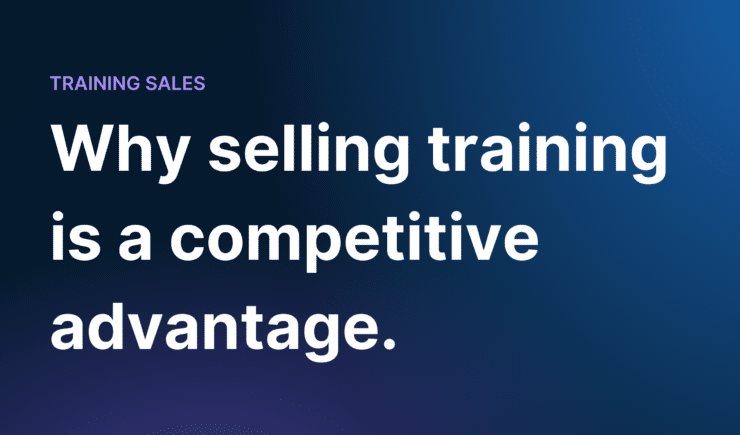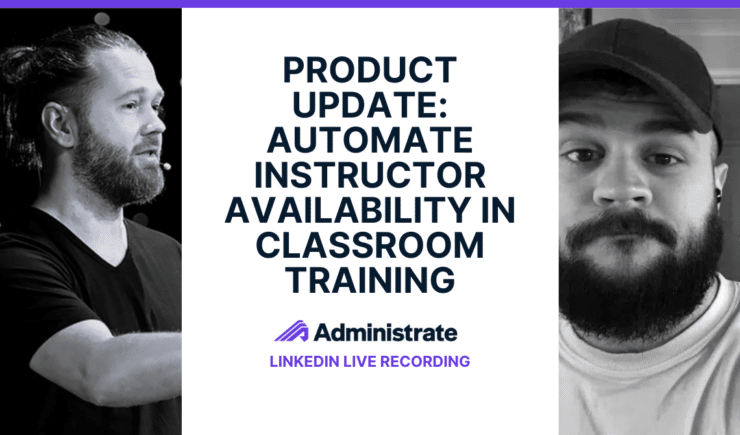The saying goes, “If all you have is a hammer, everything is a nail.” This folk wisdom certainly applies to a lot of things, but it definitely can hold true in the world of learning technology.
While other business disciplines like Finance and Marketing have evolved into complex automation platforms, until recently, training was forced to a one-hammer, one-nail solution system. Need to deliver eLearning? Get an LMS. Have to manage your curriculum? You’ll need a SCORM authoring tool and a document management system. Do you want to promote your courses? You’ll need an intranet somewhere. How are you going to track and manage data on all of this? Well, spreadsheets. Lots and lots of spreadsheets.
And this approach works, to a point. Until things change. As we all experienced in 2020, in our tech-savvy world, now there is an expected ability to be able to shift fluidly between live and virtual training. For operations that depend on manual knowledge transfer, however, negotiating that shift is anything but fluid. It requires a change management strategy.
Leading training teams are already there. Here’s how they found their agility.
In Choosing Training Technology, Your Questions Inform Your Answers
Historically, the learning tech space has been dominated by tools that provide a stopgap for the present: one problem, one solution. As a result, when we evaluate new training software, we tend to focus only on the present, with questions like:
- What’s our biggest challenge today?
- Is it easy to use, and easy to implement?
- Do we have the staff capacity to take on managing another tool?
- Can our budget afford it right now?
These questions have merit, but they can sometimes neglect the fact that software purchases cast a long shadow, and your most pressing challenges today can change tomorrow. Sometimes they change quite literally tomorrow, as we experienced in 2020.
When technology solutions fix only the past, they may not carry you well into the future. Better questions to guide a learning tech investment are questions that expect change as the norm, not the exception. These include things like:
- Will this new technology be scalable and allow us to adapt quickly to change?
- How accessible/exportable is our data if the goals we need to report on shift?
- Does this application integrate with other critical software and systems?
- Will this solution limit our options or create flexibility operationally?
- What is the ROI of this purchase, long-term?
Agile-minded training programs are leaning into these kinds of questions to frame their technology approach as they take an active role in not just finding individual tools, but in creating a change-ready environment that is positioned to evolve with the needs of the business.
So, are your guiding questions living in the past or anticipating the future? It’s a question you can’t afford to put off any longer, or you might end up with a sack of hammers, trying to find the right nail.
Asking the right questions about your training software is critical to building agility. Get started today with this guide.
Architecting the Infrastructure Approach
In this new paradigm, learning tech provides a training infrastructure where critical systems are interconnected, training operations are configurable, and the training function is built for an economy of scale. Instead of focusing on immediate answers to yesterday’s problems, an infrastructure approach creates a technology-ready context for the business changes that may arise. What does this look like?
Traits of a healthy learning tech infrastructure include:
- Features are scalable for changing needs. The addition of training delivery modalities, curriculum, learning paths, and more are available options when you need them.
- Data is secure, centralized, and 100% reportable. Limited reporting options constrict your storytelling ability when it comes to relaying the business impact of your program. An agile reporting framework ensures reportable results in the future.
- Cross-functional integrations for holistic institutional knowledge. Training data is connected continuously to complimentary business systems like HRIS and Finance platforms and data integrity is preserved in this automation.
- A configurable API framework. The technology environment assumes the requirement of working with other tools, seamlessly, and is ready for connection.
Changing Your Learning Tech Strategy
If this sounds daunting to you, know that it doesn’t have to be. At Administrate, we’ve helped hundreds of training professionals re-engineer their training operations to an infrastructure approach. We’re available to consult with you and your team at any point in your process.
We’re also happy to share this guide with you as an immediate way to continue your own thinking about this important shift. In this guide, you can go deeper in exploring the four distinctions between software that fills a temporary stopgap solution, and a training management system that’s built to support your team’s agility and scalability. You’ll find some helpful perspectives that can keep the conversation going.
How to Build Agility with Learning Tech
Future-Proof Your Training Operations



%20v1.png)



